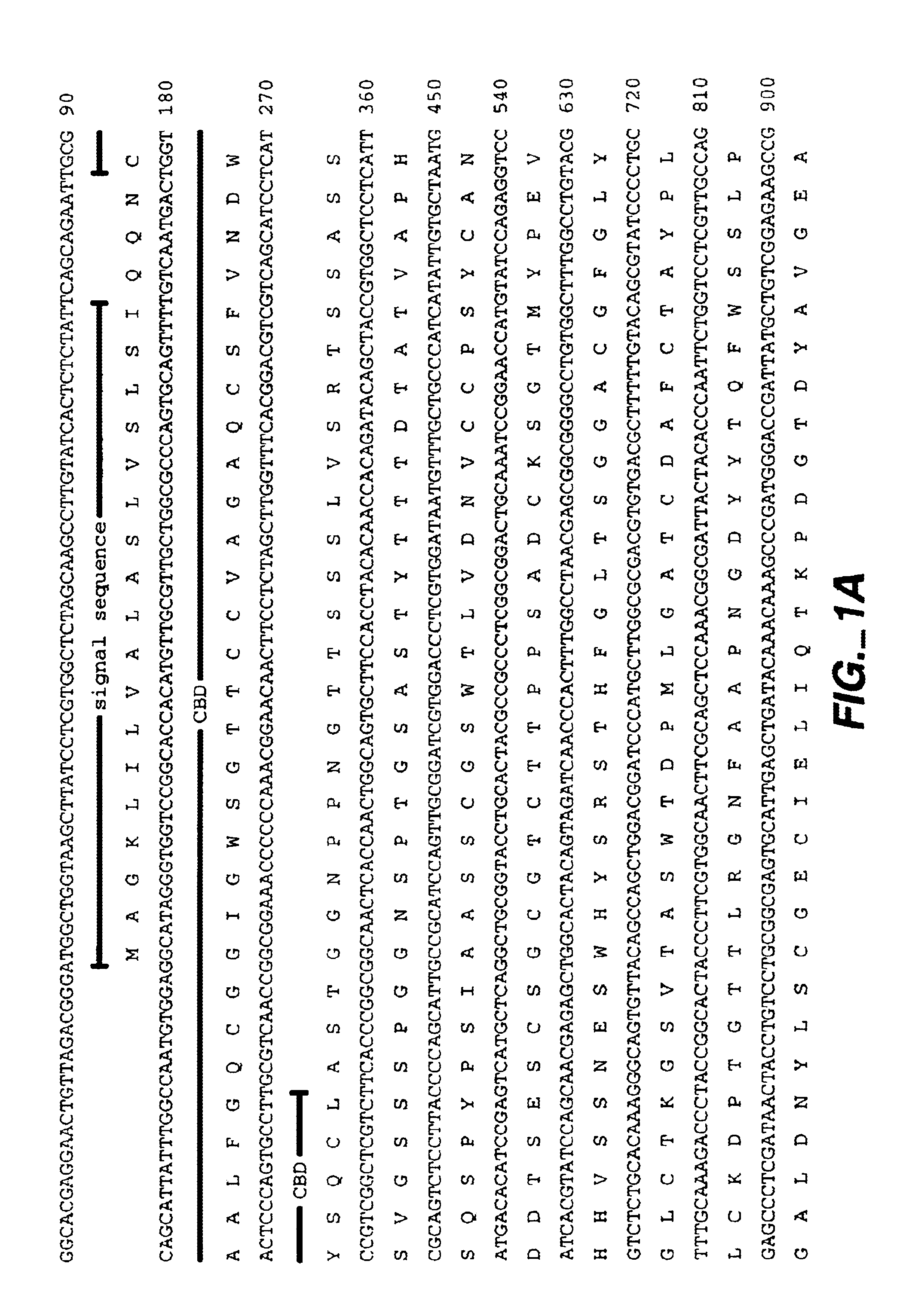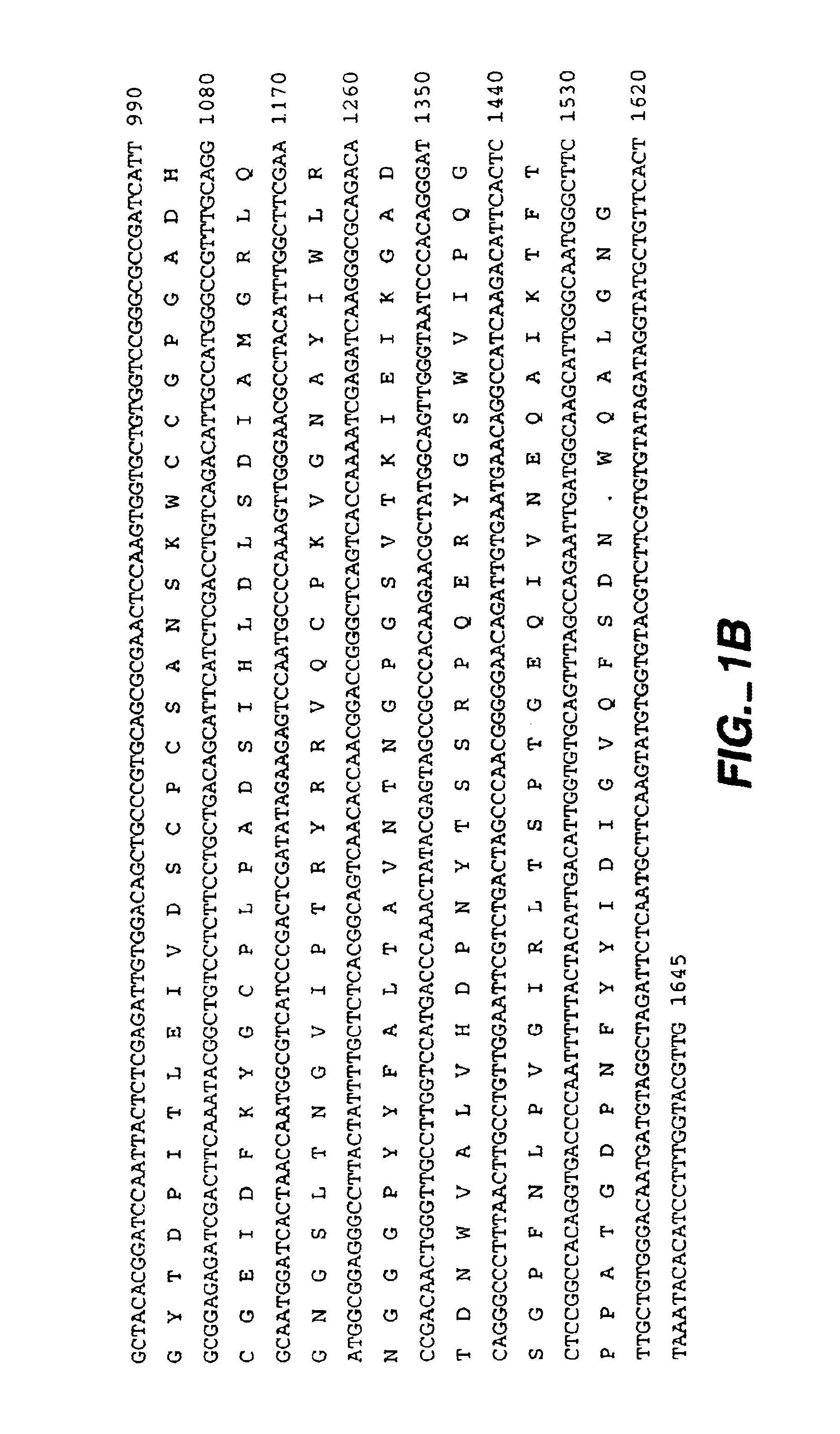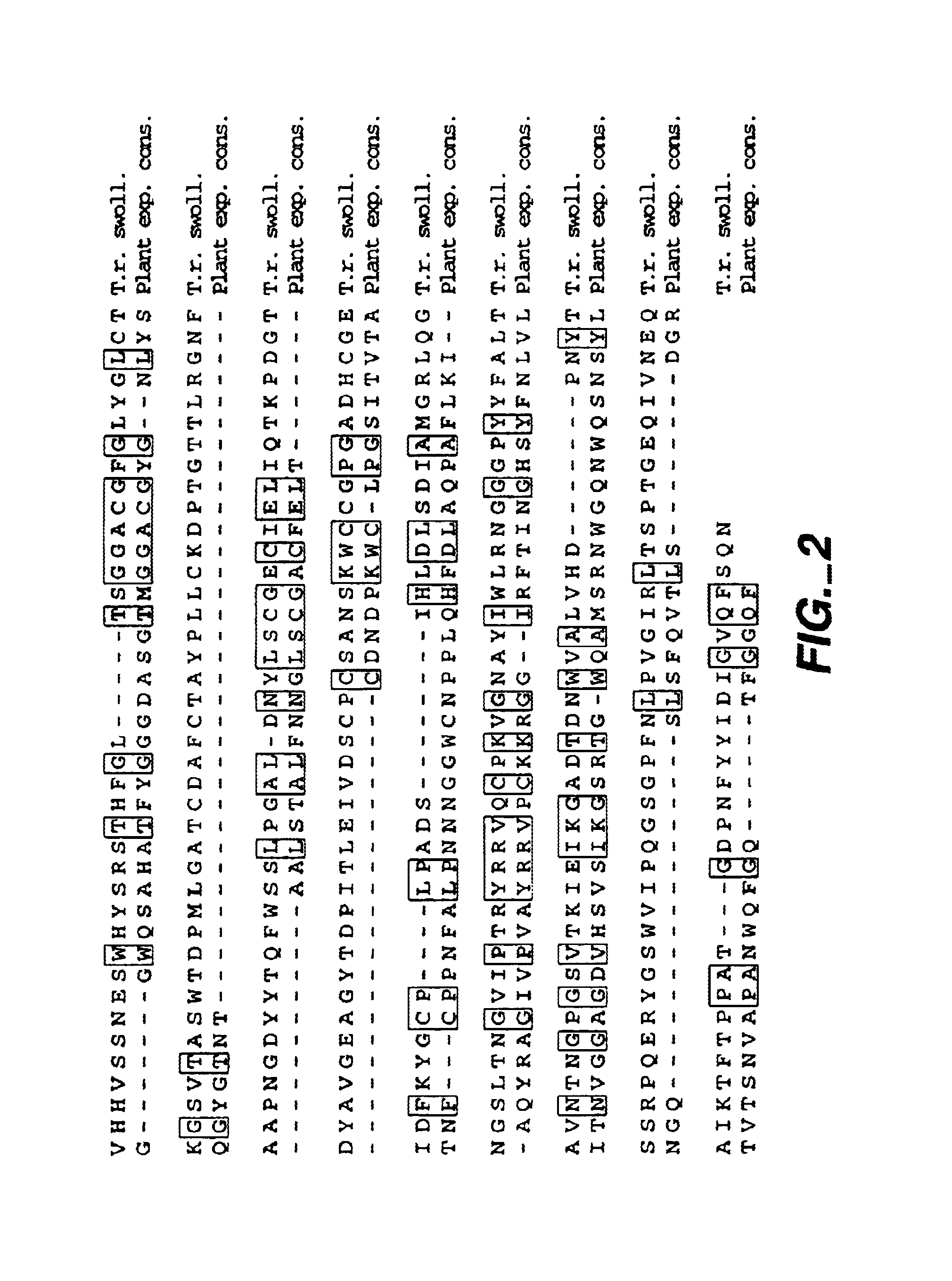Microbial swollenin protein, DNA sequences encoding such swollenins and method of producing such swollenins
a technology of dna sequences and swollenins, which is applied in the direction of fungi, peptide/protein ingredients, vegetal fibres, etc., can solve the problems that the expression system may not be optimal for large-scale production, and achieve the effect of improving the nutritive value of animal feed and excessive loss of fabric strength
- Summary
- Abstract
- Description
- Claims
- Application Information
AI Technical Summary
Benefits of technology
Problems solved by technology
Method used
Image
Examples
example 1
Trichoderma reesei (longibrachiatum) cDNA Clone Encoding a Novel Swollenin
[0064]FIG. 1 shows the nucleotide sequence (SEQ ID:NO 1) and predicted corresponding amino acid sequence (SEQ ID:NO 2) of a cDNA clone obtained from a library of cDNA prepared from Trichoderma reesei (longibrachiatum) RNA after growth on a mixed carbon source as described by Saloheimo et al. 1994, Molec. Microbiol. 13:219-228. The cDNA showed the following characteristics which help to describe the gene:
[0065]An open reading frame of 1482 nt was identified and the encoded protein was deduced.
[0066]The first 18 amino acids of the predicted protein have the following features expected of a secretion signal sequence and signal cleavage site. There is a positively charged amino acid (lysine) close to the amino-terminal methionine which is followed by a sequence of hydrophobic amino acids and an apparent signal peptidase cleavage site following amino acid IIe18. The predicted N-terminus of the mature swollenin woul...
example 2
Preparation Of A Cloned DNA Molecule Encoding Trichoderma Swollenin
[0074]The following is provided as a method of preparing a clone comprising an entire swollenin gene described in Example 2. In this example, genomic DNA or cDNA clones derived from Trichoderma and are prepared by using the following procedure.
[0075]The oligonucleotides shown below are synthesized:
[0076]
(SEQ ID NO:29)EXP-A 5′-GGCGAGATCTTGCTGCCCATCATATTGTGC-3′(SEQ ID NO:30)EXP-B 5′-GGCGTCTAGACTGCACACCAATGTCAATGT-3′
Oligonucleotide EXP-A contains a BgIII restriction enzyme recognition site near the 5′ end followed by the DNA sequence from nt 425 to nt 445 of SEQ ID NO:1. Oligonucleotide EXP-B contains an Xbal recognition site near the 5′ end followed by the reverse complement of the DNA sequence from nt 1471 to nt 1490 of SEQ ID NO:1.
[0077]Polymerase chain reaction (PCR) was performed using the oligonucleotides EXP-A and EXP-B as primers and total genomic DNA isolated from Trichoderma reesei strain QM6a (ATCC 13631) as ...
example 3
Cloning the Genomic Copy of T. Reesei Swollenin and Expression of it in Aspergillus niger var. awamori
[0082]The genomic copy of T. reesei swollenin was cloned by PCR. The template DNA was from T. reesei RutC-30 (ATCC 56765) and the primers corresponding to the 5′ and 3′ ends of the swollenin coding region were designated as GCI-PVS-055 (gcg cag atc tca gca atg gct ggt aag ctt atc ctc g SEQ ID NO: 31) and GCI-PVS-056 (gcg ctc tag atc aat tct ggc taa act gca cac c SEQ ID NO:32).
[0083]The PCR-amplified fragment was digested with BglII and XbaI and cloned into a BglII-XbaI opened pGAPT-PT resulting in pGAPT-expC. Sequencing the insert revealed that the chromosomal copy of the swollenin gene has five introns.
[0084]The chromosomal copy of the swollenin gene (i.e. pGAPT-expC) was transformed into Aspergillus and transformants were screened as described above for the cDNA.
PUM
| Property | Measurement | Unit |
|---|---|---|
| Volume | aaaaa | aaaaa |
| Volume | aaaaa | aaaaa |
Abstract
Description
Claims
Application Information
 Login to View More
Login to View More - R&D
- Intellectual Property
- Life Sciences
- Materials
- Tech Scout
- Unparalleled Data Quality
- Higher Quality Content
- 60% Fewer Hallucinations
Browse by: Latest US Patents, China's latest patents, Technical Efficacy Thesaurus, Application Domain, Technology Topic, Popular Technical Reports.
© 2025 PatSnap. All rights reserved.Legal|Privacy policy|Modern Slavery Act Transparency Statement|Sitemap|About US| Contact US: help@patsnap.com



